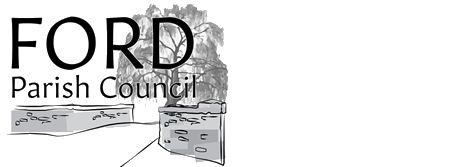Ford was a large Saxon manor, held at the time of the Norman Conquest in 1066 by Edwin, Earl of Mercia. After Edwin's death in 1071, his lands were given to Roger of Montgomery, Earl of Shrewsbury, and at the time of the Domesday Survey in 1086, Ford was held directly by Earl Roger. After the rebellion of his son and heir, Robert de Belleme, in 1101, the manor was forfeited to the Crown, and was later granted by Henry III to the Audley family who subsequently held the manor for most of the 13th - 15th centuries<1>
Ford Church was known as Ford Chapel as early as the 12th century. It was then said to be a gift of the Crown and to be a chapel dependant on the Chapel of St Michael in Shrewsbury Castle, an arrangement dating possibly from 1047. it continued thus until 1410 and as a memeber of the royal peculiar of St Michael's it was exempt from the jurisdiction of the Bishop of Hereford.
In 1410 the Chapel of St Michael in the Castle was granted by the Crown as part of the endowment of Battlefield College. Ford Chapel too, was held by Battlefield College until the latters dissoulution in 1558, when it again passed into the hands of the Crown. By this time it was leased for life to a curate. In 1590 the Crown sold the benefice, after which it passed through many hands until in 1927 the advowson was transferred to the Bishop of Hereford.
Architecture
The present church, though much modernised, is of early date. The nave and perhaps part of the chancel date from the end of the 12th or beginning of the 13th century. Some slight changes were made a hundred years later and in 1875 the church was restored when the north aisle, the south porch and western bell gable were built and also the vestry on the north side of the chancel. Two water-colours of the church prior to the restoration may be seen in the north aisle.

